Start typing

- Trade Management
- International Trade Finance
- Market Entry Strategies
- Marketing & Sales
- Research & Development
- Supply Chain Management
- CITP® |FIBP® Spotlight
- Import Export Jobs
- International Trade Courses
- International Trade Workshops
- International Trade Certification
- International Trade Resources
- FITTskills Lite Downloads
- FITT Small Business Guide: The Scaling Up Edition
Trending topics:
- Procurement
- CITP®|FIBP® designation

A Guide to Preparing an International Business Plan
By: FITT Team

An international business plan acts as a framework that identifies goals and objectives, specific target markets and clients, resources required and strategies to be developed in pursuit of international business opportunities. The plan allows for the monitoring of progress via metrics against which success and failure can be measured. A comprehensive international business plan will be comprised of a number of integrated strategies related to business functions, including communications, sales and marketing, finance and production.
What Is an International Business Plan?
An international business plan is a valuable management tool that describes who a business is, what it plans to achieve and how it plans to overcome risks and provide anticipated returns. It can be used for a wide variety of purposes, such as to:
- Set goals and objectives for the organization’s performance.
- Provide a basis for evaluating and controlling the organization’s performance.
- Communicate an organization’s message to managers and staff, outside directors, suppliers, lenders and potential investors.
- Help the planner identify the cash needs of the business.
- Provide benchmarks against which to compare the progress and performance of the business over time.
A comprehensive and detailed plan forces the planner to look at an organization’s operations and re-evaluate the assumptions on which the business was founded. In doing so, strengths and weaknesses can be identified.
Although highly dependent on the individual business case, on average it takes a three-year commitment to establish a successful presence in a foreign market. This process may require tremendous human, technical and financial resources during the developmental period.

The Planning Process
An international business plan is subject to repeated adjustment and revision to keep it current with the changing circumstances of the organization. The plan is a feedback mechanism through which new information is continually incorporated into the organization’s operations. Planning always precedes action. Therefore, planning must be thought of as a continuous cycle. The analytical tools presented here are not intended to be used just once. If they are to be useful, they should be used repeatedly as part of a process of improvement and incremental adjustment.
Plan Preparation Guidelines
These 7 guidelines will help in preparing a comprehensive international business plan:
- Clearly define the objectives for producing the plan : Who is going to read the plan, and what will they need to do? These objectives can help you decide how much emphasis to put on various sections.
- Allocate sufficient time and resources to thoroughly research the plan : A plan is only as good as the research that went into producing it.
- Show drafts of the plan to others : It can be very useful to obtain feedback from others, both inside and outside the business.
- Create an original plan that is done specifically for each business case : A common mistake entrepreneurs make is to borrow heavily from a sample plan and simply change the names and some of the numbers. There are two big problems with this approach. First , the emphasis placed on various sections of the plan must reflect what is important to the particular business in question. Second , a good plan should flow like a story, with the sections working together to demonstrate why the business will succeed. Plans that borrow too heavily from other plans tend to be disjointed, with some sections contradicting others and various key issues left unaddressed.
- Outline the key points in each section before the writing starts : These points must then be reviewed to ensure the sections are consistent with each other, there is little duplication and all key issues have been addressed.
- Ensure financial projections are believable : For many readers, the financial section is the most important part of the plan because it identifies the financing needs and shows the profit potential of the business. In addition, a good financial plan will give the reader confidence that the author really understands the business.
- Consider writing the executive summary as the last step in the process: It is usually easier to provide a concise overview after the detailed content has been created.
If you’re having trouble getting started with your business plan, try writing like it’s a series of tweets—one for every section of your business plan. To get your point across, 140 characters is all you need.
Forcing yourself to boil each section of your business plan down to one main point is an exercise in decision making and strategy all in itself. When you’re done, you’ll have everything you need to take your next step, whether that’s practicing your pitch to potential investors or a business partner, or sitting down to expand each tweet into a full section of a more traditional business plan.
Core Content
The international business plan is the culmination of all of the work done to determine the appropriate venture for the organization’s growth. As part of the feasibility process, the organization will have determined its own internal readiness, conducted comprehensive target market research and carefully analyzed any relevant risks.

At this point, the organization can take all of this information and analysis and formally document the plan for moving forward. There are many different models and examples of how to put together a formal business plan, rather than one correct way.
The right format will depend on the organization, the venture being pursued and who will be accessing the business plan and for what purpose. However, there are some basic guidelines to follow.
One of the reasons business plans are developed is to convince investors and/or bankers to invest in the venture.
Increasingly, they are looking for a business plan to include two sections: one relating to online strategy (in terms of e-marketing, social media and ROI) and the second relating to corporate social responsibility (including quality, health, safety and environment policies).
The inclusion of these topics gives more credibility to the company by demonstrating its commitment to the community and to employees’ well-being.
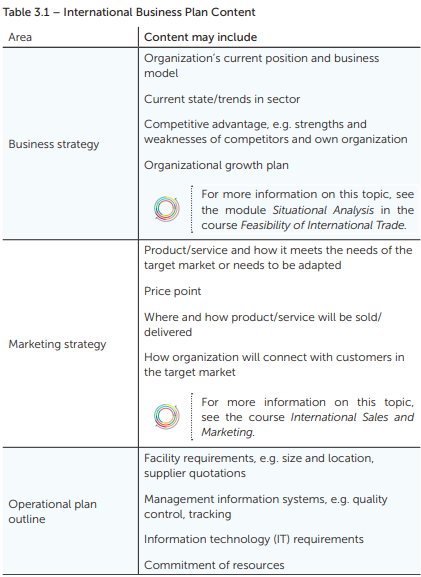
Telling a Story
One trend in business planning is to use a narrative structure in the document, rather than traditional technical writing techniques. Storytelling techniques are increasingly being used throughout the business world to create personal and organizational brands, deliver marketing messages and develop persuasive plans.
Stories make presentations better. Stories make ideas stick. Stories help us persuade. Savvy leaders tell stories to inspire us, motivate us. That’s why so many politicians tell stories in their speeches. They realize that “what you say” is often moot compared to “how you say it.
Instead of using bulleted points and cold, technical language, organizations employ a “beginning, middle and end” narrative style. This engages the audience by establishing the context, describing the conflict or obstacles and arriving at a successful resolution.
The Executive Summary
Usually the last step of preparing the international business plan is to develop the executive summary, a short overview of what the plan proposes to accomplish. For some purposes, a one-page business plan can also be useful.
There is not a great deal of difference between an executive summary and a one-page business plan. The most significant distinction is the one-page plan must completely fit on one page in a readable font, while an executive summary may spread over two or three pages.
One-Page Business Plan
There is a trend towards the one-page business plan, especially if the plan is to be presented to potential partners for their consideration. Audiences for the one-page plan will be looking for a “quick hit”: a clear and concise description of what the opportunity is and how it is being pursued.
For example, a one-page business plan might include the following topics, as described in Noah Parson’s article “How to Write a One-Page Business Plan” on the website Bplans :
- Customer problem/opportunity
- Your solution/approach
- Business model (how you make money)
- Target market (who is the customer and how many are there)
- Competitive advantage
- Management team
- Financial summary
- Funding required
The one-page plan (or the executive summary, if used in place of the one-page plan) may provide the first impression the audience has of the business. This is the most important document generated out of the business planning process, and significant effort and care should be taken in its creation.
There are many websites the provide blank samples of one-page business plans, including Bplans , the GoForth Institute and Startup.com.
A Note on Strategic Plans
A strategic plan covers many of the same points as a business plan. However, a strategic plan sets out the detailed action plan to be followed to achieve the objectives of the international business plan.
It must outline specific activities, their due dates and who is responsible for each activity. It is a project plan with a critical path. A strategic plan ensures any venture is carried out in a coordinated, informed and systematic way.
A key consideration in action planning is how quickly to enter the market, which is driven by the chosen market entry strategy. If market entry is done too quickly, the potential for costly mistakes increases. However, if it is completed too slowly, opportunities may be missed and competitors will have more time to react.
The Planning Cycle
Attaching the word “cycle” to planning implies that it happens more than once. International business plans need to be reviewed periodically because new information that has an impact on both planning and operations is continually coming in.
All plans, including international business plans and strategic plans, need to be reviewed every time there is a major event impacting the business, such as civil unrest, a currency fluctuation or the presence of a new competitor.
About the author
Author: FITT Team
The Forum for International Trade Training (FITT) is the standards, certification and training body dedicated to providing international business training, resources and professional certification to individuals and businesses. Created by business for business, FITT’s international business training solutions are the standard of excellence for global trade professionals around the world. View all posts by FITT Team
Related stories

3 common mistakes that cause international businesses to fail – and how to avoid them

Top 10 fastest growing international trade jobs in 2023

Global trade growth is slowing in 2023 as expected – here are the challenges and opportunities
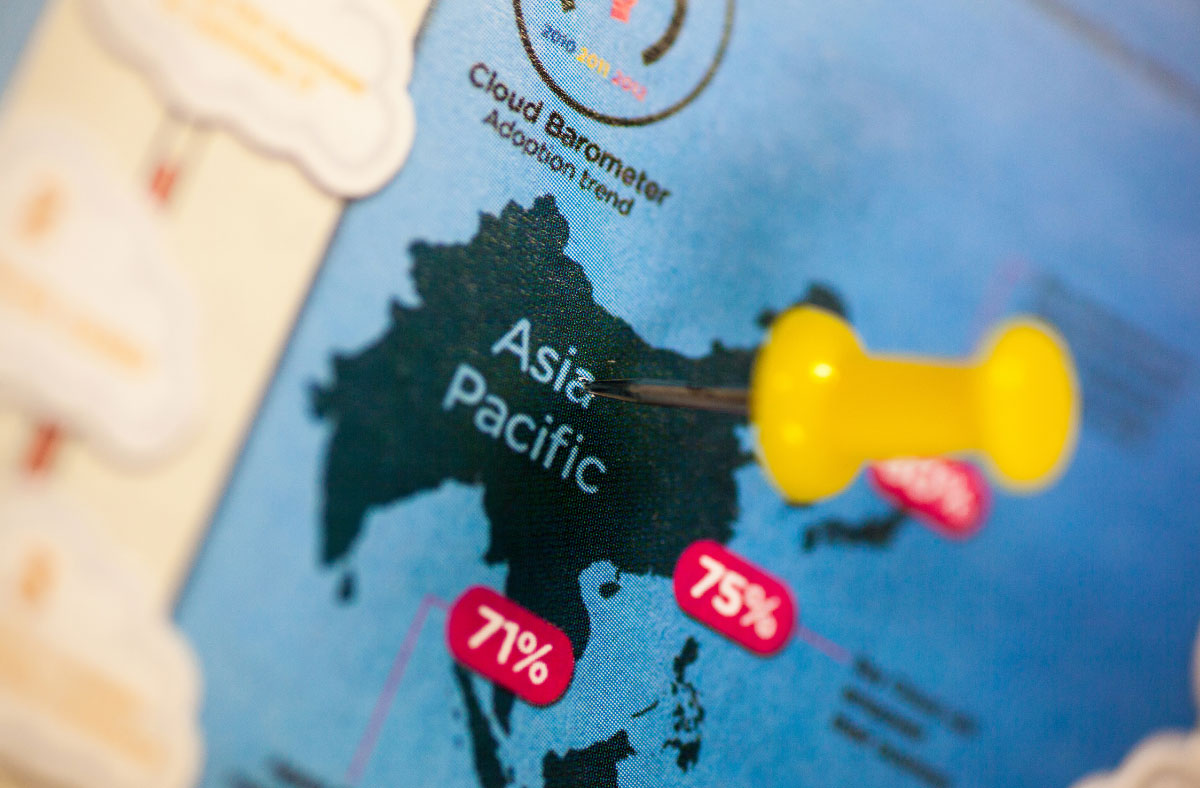
E-Commerce in the Indo-Pacific is the untapped market Canadian businesses should look to next – Here’s how
Disqus comments, leave a reply cancel reply.
Your email address will not be published. Required fields are marked *
Save my name, email, and website in this browser for the next time I comment.
2 thoughts on “A Guide to Preparing an International Business Plan”
Thank for international businesses
I have a company in Dubai and I am looking for someone who can write an internationally designed business plan with me for investors. Do you have an address I can contact?
Subscribe to our mailing list
Email address:

International Business Plan Template

What is an International Business Plan?
An international business plan outlines the goals and objectives of a business that is looking to expand into international markets. It is a comprehensive document that outlines the strategy and tactics of a business that is looking to enter into the global marketplace. The international business plan is a critical component of the overall business plan and should be developed in concert with other elements of a business’s overall strategy.
What's included in this International Business Plan template?
- 3 focus areas
- 6 objectives
Each focus area has its own objectives, projects, and KPIs to ensure that the strategy is comprehensive and effective.
Who is the International Business Plan template for?
The International Business Plan template is designed for organizations of all sizes and industries who are looking to expand their operations and business into other countries. The template provides a comprehensive framework for businesses to establish effective international business relationships, utilize digital platforms, and recruit qualified international talent. It is a powerful tool that can help businesses develop and grow their international presence.
1. Define clear examples of your focus areas
When creating an international business plan, it is important to define the focus areas that will be addressed. Focus areas are the broad topics that the plan will address, and should be tailored to the specific needs of the business. Examples of focus areas could include establishing effective international business relationships, utilizing digital platforms, and recruiting qualified international talent.
2. Think about the objectives that could fall under that focus area
Objectives are the specific goals that the business wants to achieve within each focus area. Objectives should be tailored to the business’s specific needs and should be achievable and measurable. Examples of objectives could include building an international network, developing international partnerships, creating an online presence, and strengthening online connections.
3. Set measurable targets (KPIs) to tackle the objective
KPIs, or Key Performance Indicators, are measurable targets that help to quantify the success of a project or objective. KPIs should be tailored to the specific objectives of the business and should include an initial measure, a target measure, and a unit of measure. Examples of KPIs could include increasing the number of international advisory board members, increasing the number of website visits, and increasing the number of international hires.
4. Implement related projects to achieve the KPIs
Projects are the specific actions that the business will take to achieve each objective. Projects should be tailored to the specific objectives of the business and should be achievable and measurable. Examples of projects could include creating an international advisory board, establishing strategic alliances, developing an international website, and expanding social media presence.
5. Utilize Cascade Strategy Execution Platform to see faster results from your strategy
Cascade is a powerful strategy execution platform that helps businesses quickly and effectively develop and execute their international business plans. Cascade provides businesses with the tools and insights they need to stay organized and ensure their plans are executed accurately and efficiently. With Cascade, businesses can stay on track and achieve their goals faster than ever before.

- Tips & Advice
- IT Risk and Security
- Life & Tech Blog
- Visit Our Site
7 steps to create your international business plan

Congratulations! You’ve made the decision to go global . Now how do you get started?
First, determine your company’s export readiness by taking this nine question quiz created by the U.S. Department of Commerce. The website calculates your readiness score and provides additional resource links to help overcome any corporate weaknesses.
Next, develop a plan. Stanley Pfrang, Market Development Director – India, the Middle East and Africa, WEDC , and Jen Pino-Gallagher, Bureau Director, International Market Development, DATCP , shared a seven step plan at a program I recently attended.
- Proactively develop a plan. Some companies reactively dive into the international market after receiving a product or service inquiry from overseas. A better strategy is to first think through planning steps two-seven to help avoid costly missteps.
- Conduct market research. Is there a need or demand for your product or service? Is market expansion feasible? Who are your competitors? What financial and legal paperwork is required? Do your current customers also operate in global markets? If so, what can you learn from them about opportunities and potential pitfalls?
- Entering new markets. Who can help you distribute your product? Do you need storage space? Will you need a manufacturing partner located in your target destination?
- Logistics. How important is your delivery speed? The decision will help you select transportation carriers and/or delivery routes.
- Payments. Determine what currency you will accept. Will you sell in U.S. dollars and/or foreign currency? Will you offer a discount if payment is received in U.S. dollars? Will you accept letters of credit? Will you require a down payment before production begins on goods or services?
- Visit the market before entering it. How do your competitors operate? How will your customers use your products or services as compared to those of your competitor? Trade shows are a good, inexpensive resource to help you see market potentials and downsides.
- Resources. Explore state and federal government online resources. Join an industry association knowledgeable about international trade. Talk to customers and maybe even competitors to learn from their mistakes and wise decisions.
After sharing the seven step plan, Pfrang, Pino-Gallagher and other program panelists offered additional tips.
Don’t be afraid to ask questions about companies interested in your product. How long have they been in business? Obtain customer and vendor references. A face-to-face meeting to establish a relationship before doing business is best and can be done using Skype or a similar internet connection if necessary.
When seeking a trade consultant, hire a native of the foreign market you wish to enter because she will better understand the market needs and difficulties. At a minimum, hire someone with English as his second language.
Never automatically dismiss a lead that comes your way. Always explore the possibilities. It may lead to big things.
Be ruthlessly conservative in planning when internally strategizing your approach to new markets and opportunities that arise. Remember to include the impact on staff resources, time zone differences and product distribution methods.
Read Kiss, Bow or Shake Hands , a book that provides insights into business culture and customs in many different international markets. Lastly, always remember the primary goal of marketing.
So now it’s your turn to share advice. What resources do you use? What wisdom have you developed through experience? I’d love to hear from you. You can leave your comments below or you can reach out to us on Twitter and Facebook .

- Click to email a link to a friend (Opens in new window)
- Click to print (Opens in new window)
- Click to share on Facebook (Opens in new window)
- Click to share on Twitter (Opens in new window)
- Click to share on LinkedIn (Opens in new window)
- Click to share on Pinterest (Opens in new window)
About Guest Blogger
Connect with tds.
Stay connected with TDS Business for the latest news.
Related Posts:
- Transform your home office with these 5 steps
- “Love Stinks” – when a scammer is involved
- Tips and Tricks for Better Wi-Fi
- 3 Steps Toward Brand-Worthy Customer Service
- Protect yourself from phone fraud this holiday season
business plan , DATCP , Deloar Newton , Global , International , Jen Pino-Gallagher , Stanley Pfrang , WEDC
One Response to 7 steps to create your international business plan
I run a small time web business in the evening, and have been operating globally for over a decade. If you have any type of web presence for your product, you quickly find yourself doing global sales on a small scale in terms of units – i.e. single items – though not necessarily on a small scale in terms of income- about 30% of my sales are out of country -that is where my strongest customers are (and oddly in the countries with universal health care and some of the highest tax rates). Many local banks are not set up to handle those type of transactions economically so I use various on line payment systems. You lose 3-4% but it is a lot simpler than any other option. I learned this the hard way when my community bank took 4 months to finalize a simple overseas bank transfer from the Philippines. For screening customers I am basically linked to other people working in the same type of business. We share mainly which customers to avoid, scammers and the like. Likewise I have come to learn a lot about what countries to ship to an which to avoid as well as the various headaches of different import customs and other processes. It can be a tricky process but a lot of local small businesses are doing it . In terms of language barriers – if you are not dealing with English speaking customers there are various free translation services on line – In todays world though you need these markets – Wisconsin is the weakest state I have for sales and overseas is by far the most profitable.
Leave a Comment Cancel reply
TDS Connect Business Blog Learn more about how TDS Business can help your company with innovative business communications services and solutions. Discover TDS Fiber Internet, Phone, VoIP Solutions and TV.
About TDS Business
TDS Telecommunications delivers high-speed internet, TV entertainment, and phone services to a mix of rural and suburban communities throughout the U.S. With 1.2 million connections, TDS is a rapidly growing technology company. Powered by fiber-optics and new industry-leading technologies, TDS delivers up to 8 Gigabit internet speeds and offers internet-protocol based TV entertainment solutions along with traditional phone services. TDS also offers businesses VoIP advanced communications solutions, dedicated internet service, data networking, and hosted-managed services.
Copyright © 2024, TDS Telecommunications Corporation, All Rights Reserved.
Site by Madison Web Design
Recent Comments
- Shane Corcoran on Your Looming Partnership With AI Technology
- Rae Ann Rockhill on Professionals are leaving HR on “read”
- GS on Professionals are leaving HR on “read”
- dboegli on Retirement: It’s a process, not a “quit”
- Kathy Mangan on Retirement: It’s a process, not a “quit”
- TDS Business
- TDS Residential
- TDS on Twitter
- TDS on Facebook
- TDS Business on YouTube
- TDS Business on LinkedIn
- TDS Residential Blog
Most Popular
Privacy Overview
Craft Your International Business Plan: A How-To Guide

Are you ready to take your business across borders? International expansion is a great way for businesses to grow and succeed in new markets. But before you dive into an international market, there are specific steps you need to consider: crafting a strategic plan. Whether it’s determining the competitive landscape of a target country or understanding local customs and regulations, an effective international business plan can lay the foundation for long-term success while also providing guidance on how best to allocate resources and manage risks. But where should one begin? Let’s dive into it!

Analyze Potential Markets
In today’s global market, expanding your business into new markets can open up a world of opportunities for ecommerce revenue growth. To get ecommerce revenue from new markets , the first step is to analyze potential markets. This involves conducting market research to identify which countries or regions hold the greatest potential for your business. You can start by looking at demographic data, economic trends, and consumer behavior in different parts of the world.
Of course, you should also delve into the market-specific data. Analyzing the competitive landscape and potential barriers to entry is sure to determine which markets are most viable for your business. Additionally, understanding cultural differences and local customs can give you insight into how your product or service may be received in a new market. Businesses can now expand their reach and increase their revenue streams in ways they never thought possible.
Set Clear Goals and Objectives
Once you have identified potential markets, it’s time to set clear goals and objectives for your international expansion. These goals should align with your overall business strategy and take into account the resources needed to enter a new market successfully.
Do you want to increase brand awareness, generate more revenue, or establish partnerships in a particular region? Or maybe you want to expand into a new market to diversify your customer base and reduce risk. Whatever the reason may be, setting clear and measurable goals can guide your decision-making process and ensure that your international business plan is aligned with your long-term vision.
Develop A Robust Strategy
With potential markets and goals in mind, you need to develop a robust strategy for entering the international market. But how do you know which strategy will work best for your business?
Direct Exporting
Direct exporting involves selling your products or services directly into the international market. This approach can be a low-cost way to test the waters and gain valuable information about overseas markets without the commitment of setting up a physical presence. However, it does require careful planning and research. Consider your product’s suitability for the market, the logistics of shipping and delivery, legal and regulatory requirements, and how you’ll handle customer service.
Licensing and Franchising
If you prefer a more hands-off approach, licensing and franchising can be viable options. Licensing involves granting another company the rights to use your intellectual property, such as trademarks or patents, in exchange for royalties or fees. Franchising is similar but typically involves a more comprehensive arrangement where the franchisee follows your established business model and brand guidelines.
Joint Ventures and Strategic Alliances
Collaborating with a local business through joint ventures or strategic alliances can also be an effective way to enter a new market. This approach allows you to benefit from the other company’s expertise and established networks while sharing the risks and costs associated with entering a new market.
Mergers and Acquisitions
For businesses looking to make a big splash in the international market, mergers and acquisitions can provide a quick way to gain market share, access new technologies or products, and expand your customer base. These transactions require significant financial resources and due diligence to ensure compatibility and avoid potential risks.
Identify The Resources You Need
No matter which strategy you choose, entering the international market requires a significant investment of time, money, and resources. It’s essential to identify what you need to make your international expansion a success.
Consider the staffing and expertise needed to manage operations in a different country. Will you need to hire local employees? If so, do you understand labor laws and cultural norms for managing a workforce in that country? Will you need to partner with local vendors or suppliers? How will you handle language barriers and cultural differences? It’s also crucial to assess your financial resources and determine how much capital you’ll need for market research, legal expenses, marketing efforts, and other related costs. Secure funding or explore financing options early on to avoid delays in your expansion plans.
Consider Different Countries or Regions
As businesses expand globally, you must first understand the unique culture, customs, and laws of different countries or regions to effectively reach and connect with their target audience. For example, did you know that in Japan, it’s considered impolite to loudly slurp noodles? Or that in China, the color red symbolizes good luck and happiness? Or that in Germany, punctuality is highly valued?
When you consider the cultural nuances and preferences of your target market, you can tailor your marketing strategies, product offerings, and overall business approach to resonate with local consumers. This can go a long way in building trust and brand loyalty in the global marketplace.
Decide How You Will Marke Yourself Abroad
Now that you have a clear understanding of your target market and their cultural preferences, it’s time to decide how you will promote and market your business abroad. This can include tactics such as translating your website and marketing materials into the local language, partnering with local influencers or businesses, and utilizing social media platforms popular in that region.
Even consider any legal or regulatory requirements for advertising and marketing in the target market. In certain countries, there may be restrictions on certain types of advertising or requirements for labeling and packaging. Other countries may have specific rules for online advertising and data collection.

Venturing into the international arena can be a game-changer for your business, opening up new avenues of growth and diversification. The journey, however, is paved with its unique set of challenges and complexities.
A strategically crafted international business plan acts as the compass guiding you toward success. It entails rigorous market analysis, clear goal-setting, robust strategic development, resource identification, cultural understanding, and effective marketing. Such a plan ensures that your business meets the needs and expectations of your new customers, stands tall amidst global competition, and reaps the rewards of global expansion. Get ready to embrace an exciting journey filled with opportunities, learning, and growth. Now that you have a step-by-step guide in hand, the world is truly your oyster!
Related Posts
The true worth of ageas shares ahead of shareholders’ meeting, legend holdings realized revenue of rmb436 billion in 2023, gome fin tech announced annual results of 2023.
Type above and press Enter to search. Press Esc to cancel.
Business Plan Template for International Business
- Great for beginners
- Ready-to-use, fully customizable Subcategory
- Get started in seconds

Thinking about expanding your business into international markets? It's an exciting opportunity, but it comes with its fair share of challenges. That's where ClickUp's Business Plan Template for International Business can help!
With this template, you'll be able to:
- Clearly define your business objectives and strategies for international expansion
- Conduct thorough market research and analysis to identify target markets and assess demand
- Analyze the competition and devise effective strategies to stay ahead
- Create detailed financial projections and risk management strategies for a solid foundation
Don't leave your international expansion to chance. Use ClickUp's Business Plan Template to ensure a comprehensive and well-structured plan that sets you up for success. Start expanding your horizons today!
Business Plan Template for International Business Benefits
Expanding your business internationally can be a daunting task, but with the help of the Business Plan Template for International Business, you can ensure a successful venture by:
- Outlining clear and achievable business objectives for international expansion
- Developing effective international marketing strategies to penetrate new markets
- Conducting thorough market demand analysis to identify profitable opportunities
- Analyzing competition to gain a competitive edge in international markets
- Creating accurate financial projections to make informed investment decisions
- Implementing risk management strategies to mitigate potential challenges and uncertainties
Main Elements of International Business Business Plan Template
When expanding your business internationally, it's crucial to have a well-structured plan in place. ClickUp’s Business Plan Template for International Business includes:
- Custom Statuses: Track the progress of each section of your business plan with statuses such as Complete, In Progress, Needs Revision, and To Do.
- Custom Fields: Add important details to your plan using custom fields like Reference, Approved, and Section to ensure all necessary information is included.
- Custom Views: Access multiple views to effectively manage your business plan, including the Topics view for a comprehensive overview, Status view to track progress, Timeline view for a visual representation, Business Plan view to see the complete plan, and the Getting Started Guide view to assist you in utilizing the template effectively.
- Collaborative Features: Utilize ClickUp's collaboration tools, like assigning tasks, commenting, and attaching files, to work seamlessly with your team on developing and refining your international business plan.
How To Use Business Plan Template for International Business
If you're planning to expand your business internationally, using a Business Plan Template specifically designed for international business can help you stay organized and set clear objectives. Follow these six steps to make the most of the template:
1. Research the market
Before diving into your business plan, conduct thorough research on the target international market. Understand the local culture, consumer behavior, and competition. Identify potential challenges and opportunities, and determine how your business can meet the needs of the international market.
Use the Docs feature in ClickUp to compile your market research findings and gather insights.
2. Define your objectives
Clearly define your objectives for entering the international market. Are you looking to increase market share, expand your customer base, or establish strategic partnerships? Set specific, measurable, attainable, relevant, and time-bound (SMART) goals to guide your business plan.
Create tasks in ClickUp to outline your objectives and break them down into actionable steps.
3. Develop a marketing strategy
Craft a comprehensive marketing strategy tailored to the international market. Determine the most effective channels, messages, and tactics to reach your target audience. Consider cultural differences and language barriers, and adapt your marketing approach accordingly.
Use the Board view in ClickUp to map out your marketing strategy, assign tasks to team members, and track progress.
4. Create a financial plan
Develop a detailed financial plan for your international business venture. Estimate costs such as production, distribution, marketing, and legal fees. Analyze potential revenue streams and project financial outcomes. Include a contingency plan to mitigate risks and account for unforeseen circumstances.
Utilize the Table view in ClickUp to create and manage your financial plan, including budgeting, forecasting, and tracking expenses.
5. Address legal and regulatory considerations
Research and understand the legal and regulatory requirements of operating a business in the target international market. Ensure compliance with local laws regarding taxes, licenses, permits, and intellectual property. Seek legal counsel if necessary to navigate any complexities.
Create custom fields in ClickUp to track legal and regulatory tasks and deadlines, ensuring nothing falls through the cracks.
6. Monitor progress and adapt
Regularly review and monitor the progress of your international business plan. Track key performance indicators (KPIs), evaluate the effectiveness of your strategies, and make adjustments as needed. Stay agile and responsive to changes in the international market.
Use the Dashboards feature in ClickUp to visualize and analyze your KPIs, allowing you to make data-driven decisions and drive continuous improvement.
By following these steps and using the Business Plan Template for International Business in ClickUp, you'll be well-prepared to expand your business globally and navigate the unique challenges and opportunities of the international market.
Get Started with ClickUp’s Business Plan Template for International Business
Entrepreneurs and companies looking to expand internationally can use the Business Plan Template for International Business in ClickUp to create a comprehensive plan for success.
First, hit “Add Template” to sign up for ClickUp and add the template to your Workspace. Make sure you designate which Space or location in your Workspace you’d like this template applied.
Next, invite relevant members or guests to your Workspace to start collaborating.
Now you can take advantage of the full potential of this template to create a solid international business plan:
- Use the Topics View to outline and organize different sections of your business plan, such as objectives, marketing strategies, financial projections, and risk management.
- The Status View will help you keep track of the progress of each section, with statuses like Complete, In Progress, Needs Revision, and To Do.
- The Timeline View will allow you to set deadlines and milestones for each section, ensuring timely completion of your business plan.
- Utilize the Business Plan View to have a comprehensive overview of your entire plan, including all sections and their statuses.
- The Getting Started Guide View will provide you with a step-by-step guide on how to use the template effectively.
- Customize the Reference, Approved, and Section custom fields to add additional details and track important information.
- Collaborate with your team members to brainstorm ideas, analyze market demand, conduct competitive analysis, and develop financial projections.
- Regularly review and update your business plan to ensure it remains relevant and aligned with your international expansion goals.
- Business Plan Template for Seo Agencies
- Business Plan Template for Prototyping Teams
- Business Plan Template for Rig Workers
- Business Plan Template for Communications Specialists
- Business Plan Template for Academics
Template details
Free forever with 100mb storage.
Free training & 24-hours support
Serious about security & privacy
Highest levels of uptime the last 12 months
- Product Roadmap
- Affiliate & Referrals
- On-Demand Demo
- Integrations
- Consultants
- Gantt Chart
- Native Time Tracking
- Automations
- Kanban Board
- vs Airtable
- vs Basecamp
- vs MS Project
- vs Smartsheet
- Software Team Hub
- PM Software Guide

Growth Business
Your gateway to entrepreneurial success

How to draw up an international business plan

Here, Nick Farmer, international tax partner at Menzies LLP explores how businesses can take advantage of the international market.
Many businesses have heard about the benefits of trading internationally, but haven’t yet taken the plunge. Others may have started on this journey, but are still trying to figure out how to improve their international experience.
To make a success of international trade , it is important to approach it as a separate part of the business and draw up a specific international business plan. Without this planned approach, things could turn sour quickly, if credit control becomes a problem for example, or timelines required to place people in overseas territories are misjudged.
Here’s a step-by-step plan to realising your international ambition.
Step 1 – Know your reasons

Do you know the reasons why you want to trade internationally? Business owners should have a clear understanding of why they are taking the business down this path.
One of the most common reasons for choosing to trade internationally is to spread the customer base. The business may have built up a solid customer base in the UK and be seeking to expand into one or more geographic territories. It may be aiming to drive profits or perhaps to reduce dependency on its domestic market. For other businesses, international trading is simply viewed as the next stage in its development or a means of helping the business to innovate to stay competitive.
Step 2 – Research and finding the right model
Once the business has decided to trade internationally, the next step is to research the demand for its products or services, and to establish how to do business in the overseas market.
At this stage, there will be many questions to answer, such as ‘what markets should be targeted?’, ‘how much competition is there?’ and ‘how easy is it to trade in a particular territory?’ According to the World Bank Group, the UK is the seventh easiest country to do business in. However, other countries can be much more challenging, so it is important to visit the overseas market to really understand the business environment and the local customs and culture.
This research should help identify any changes that will be required to the product or services to comply with local regulations. It will also help establish realistic timelines.
“If seeking to trade in China, where there is considerable red tape, it may be necessary to establish a local entity which can take several months”
Whilst taking account of these requirements, the business should consider its operating model carefully. This could range between selling directly from the UK, perhaps using in-country agents or distributors, through to setting up a local office to increase its market penetration. Other alternatives might include the use of licence or franchise arrangements or looking for local joint venture partners or acquisitions.

More on international trading
- Exporting to India: What to consider
- Brexit means more UK business for China over Europe, says expert
- Building a better business in Brazil
Step 3 – Access to resources
As part of the planning process, it is vital to make sure the business has sufficient resources and capacity to take on the chosen activity.
Carrying out a ‘health check’ can help to identify gaps in resources, such as a lack of management time or depth of expertise.
As well as considering who is going to be responsible for managing the process and making sure control procedures are in place, the business should critically assess its cashflow and assess any trade finance that may be required. Also, if employees will need to travel or take up roles overseas, this should be discussed at an early stage and it may be necessary to invest in local knowledge or website development .
Step 4 – Invest in relationships
Whilst trading internationally can be very rewarding, it is not without risks and businesses should appoint a hand-picked team of trusted advisers to guide them.
As well as seeking out business and tax advisers with experience of supporting multinationals or helping businesses to trade internationally, it is also important to have the support of a close network of other experts who understand the company’s international business plan. This may include support from legal, immigration , foreign exchange, insurance and logistics services firms.
Step 5 – Keep the plan under review
Once in place, the international business plan should be kept under review to ensure progress is being made against its strategic goals. Managers will need access to reliable, real-time data to ensure the company’s international trading activities remains profitable, so accounting systems should be configured with this in mind.
Find out more: Menzies LLP
Related Topics
Related stories.

Growth Planning
How data management can boost start-up growth
From analytics to security, good data management should be a serious consideration for any start-up chasing high growth

What are the benefits of hiring a contractor?
In a tightening jobs market, where people with specialist skills are sought after, hiring a contractor as opposed to taking on full-time staff could be the answer
Timothy Adler

Can a sole trader employ staff?
What is a sole trader? Does it mean you have to work alone?
Dom Walbanke

What is a scale-up visa?
A scale-up visa allows skilled overseas talent to be employed by eligible scale-ups in the UK

What scaleups have in common
Are there any personality traits that founders of scaleups share? What sectors are they in? And do Britain’s fast-growth businesses have other things in common?

- Youth Program
- Wharton Online

How To Scale Your Business Internationally

Since more than 95% of global consumers live outside of the U.S. , reaching new customers transnationally can help you expand your business market, profits, and revenue. Following are five tips on how to scale a startup business or established business globally.
1. Create a Service or Product that Meets a Need in Global Markets
Many of the world’s largest international companies are based in the U.S. Digital connectivity as a means to expand into new global territories has become more common. There are many considerations when you plan to scale a startup business or an established business globally.
Evolving technology is one way to help scale or establish an overseas business easier when you’re selling a product or service. Every country’s population has its own economic structure, lifestyle, and culture. If there’s no need for your product or service in a new area, you’re likely to lose time and money attempting to conduct business there.
Develop an international business plan
Any business plan needs a sound strategy that identifies a need for a product or service and explains how it will meet that demand. Developing a strategy can help you protect your resources and ensure expansion makes sense. It’s important to consider how a new area’s competition, cultural attitudes, and regulations could affect your product or service’s likelihood of success.
2. Research International Regulations
Every country in which you want to expand will have varying laws on everything from employment to marketing claims, and data privacy to taxes.
You’ll want to operate legally and protect your business resources to avoid costly mistakes that can affect your budget and reputation. It’s wise to work with legal experts from the country in which you want to expand to ensure you’re following all rules and regulations.
Research assistance programs
In your research, you may discover government programs that could assist your business expansion. For example, there might be incentives for opening an office in a different country. Knowing this, could help inform your expansion strategy.
3. Hire Local Employees in the Region
Hire local employees in the area in which you are planning to expand has some advantages. Having local employees can:
- Help ensure that you avoid cultural and language issues in omnichannel marketing and other company representations, such as your website.
- Demonstrate that your company is invested in the area’s people and community. That can improve sentiment for your business and help spread the word about your company, which, in turn, can help you win more customers.
- Help your company relate better to local customers. Customer-facing employees, such as customer support and sales teams, can help achieve this by speaking to customers in their native language. It also helps increase the diversity of your workforce. Plus, workers in other countries can also learn about other cultures through international teamwork.
- Make your company more attractive to talented job candidates who are interested in working internationally or attending international events, such as business summits.
4. Explore Ways to Attract Local Customers
Market research can help you understand your target audience in each new area. You need to ensure your business proposition stays consistent in international markets, and you need to meet prospective customers where they are. For example, determine and target customers in the area that spend time on a particular social network.
International marketing and sales teams can also benefit from local input to ensure customer experience strategies will work in that market. For example, learn whether an acceptable word or phrase in one language may be offensive in another. This effort includes:
- Accepting local forms of currency
- Offering culturally respectable messaging and communication in locals’ native language
- Marketing on customers’ preferred channels
- Providing customer support from local workers
5. Enable a Strong Company Culture
Weave your vision throughout corporate communications and global branches. All employees should be unified by the same mission, even when business strategies differ locally.
When your employees work across various time zones, ensure that collaboration and your company’s culture remains strong.
Use technology and tools in daily operations that facilitate asynchronous collaboration. These could include social platforms like Discord, video conferencing and chat platforms like Microsoft Teams, and cloud-based project management solutions like Workfront.
Support team bonding
Support international team bonding by bringing teams together when possible. This might be through an annual in-person summit or virtual gatherings that can accommodate multiple offices. Publicize successes of international departments. This signals to all employees and teams the global impact your company is making. As your business strategy evolves, solicit input from your global teams to help everyone get involved and feel valued.
Learn More About Ensuring Global Business Success
International expansion can be an exciting time for a company. It can help you gain more customers, bolster international local economies, and provide other benefits to the world.
If you are involved in an international business, or you’re interested in global scaling, the Managing in the Global Digital Economy course from Wharton Online can help you succeed.
This course:
- Covers the growth of the digital economy through various digital platforms,
- Details how the network effect can unfold at global levels
- Explains the risks of international expansion
- How to develop a successful digital strategy
Learn more and enroll her e .
The Wharton School is accredited by the International Association for Continuing Education and Training (IACET) and is authorized to issue the IACET CEU.
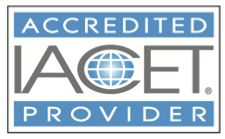
5 Must-Haves Every International Business Expansion Plan Should Have

In a globalised world, growing your home-based business by tapping into new markets is easier than ever—at least in theory. Developing an international business expansion plan can be a transformative experience for any organisation. After establishing a successful company right at home, stepping out of your comfort zone and expanding to new markets is often critical to a company’s overall growth strategy.
But understanding how to grow your business offers several challenges. Most CEOs will focus on the usual regulations, tax restrictions, distribution, and licensing issues. But language is often one of the greatest barriers when thinking about how to make your business grow .
So, does your company have what it takes to go global? Here’re a few things to consider.
1. Conduct International Market Research
Attempting to go global without conducting thorough international market research can be a huge waste of time and money. Why? Simply because the reasons behind your organisation’s international business expansion plan must be thoroughly vetted and thought out. For this, conducting international market research is key. Be it by contracting the services of a research company or performing it on your own with tools like Google Trends . Market research will allow you to gauge the interest these new markets harbour towards the goods or services you offer. In turn, this analysis will let you know when the time is ripe to kickstart your international business expansion plan.
#OptimationalTip: If hiring a company to conduct international market research is beyond your budget, leveraging tools like Google Trends or Ubersuggest will let you search interest trends in keywords broken down by location.
2. Translate for Countries, Not Languages With Localisation Services
It’d be naive to think that simply translating your content to a different, widely used language is all it takes to expand to new markets. Take Spanish, for example, and the different nuances it displays between Spain and Latin America.
Translating and localising aren’t the same thing . Focusing on localisation will mean not just adapting content but also your overall marketing strategy, price points, checkout, and payment options, and even date formats and writing tone. Studies show that customer experience became the key brand differentiator, overtaking price and product. With this in mind, the first step to providing an excellent customer experience is to communicate with your customers (and prospects) in a manner tailored to their tastes and customs—from language to everything else.
3. Optimise for Google: Translation and SEO
One of the key ways to reach a new audience is by making sure your brand is easily found on Google—or any other search engine that’s popular in the new market you’re stepping into. This means paying close attention to your SEO results.
SEO results depend on several factors, some of which are easier to improve than others. Aside from the technical side of a website, one of the key things to improve your SEO performance is making sure your content is relevant to your audience. This means creating quality content that your readers will find useful and catch their eyes. Also, using the right keywords guarantees that when someone searches for a specific topic on a search engine, your content pops up.
In Short: Leverage tools like Ubersuggest to find the short and long-tailed key terms and phrases that work best for your business in your new market. Next, remember to localise the rest of your content according to multilingual SEO best practices as well.
#OptimationalTip: Creating multilingual content and using each region’s appropriate keywords for that topic will make your content rank higher. Also, as people look for something, find and read your content, the search engine’s algorithm will consider it more valuable.
4. Create a Seamless eCommerce Experience
Is there anyone among the readers of this article who hasn’t had at least one online shopping experience (either to buy or to sell)? We bet not. And as the eCommerce experience is only increasing, paving the way for users makes more than just sense. In other words, making your products easily and readily available in a way that’s understandable by your end-user is key.
Studies show that people are keener to buy a product in their original language. This highlights the importance of translating your eCommerce experience—from welcome messages to after-purchase emails and manuals. Also, being able to access the purchase experience in their original language is a great way to improve customer experience. This is something that over 86% of customers say are willing to pay extra for .
#OptimationalTip: During a purchase, forcing your potential customers to go through the content in a foreign language—or bad copy due to poor translation—can mean losing the sale entirely. Boost your chances of success by ensuring a properly written online experience in their native language.
5. Leverage the Power of Videos Through Professional Subtitles
Creating content through videos is a great way for businesses to keep their audience engaged and build trust. However, failing to add professional subtitles in different languages to your video can mean losing the opportunity to engage with a broader audience. While, ideally, companies would create a localised video for each different target audience, certain content (like explainer videos or user manual videos) can be easily reused simply by adding language-relevant professional subtitles.
According to research findings, 73% of customers say they are more likely to purchase if they can watch a video explaining the product or service. Investing in localisation services such as professional subtitles can enable companies to significantly increase conversion rates.
Final Thoughts on Creating an International Business Expansion Plan
Global expansion has undeniably become the ultimate organisational goal. To assert industry leader status, organisations must penetrate international borders, attract new target audiences, and significantly boost ROI.
To bridge the language barrier, companies need a proactive localisation services partner to increase their speed to market, ensure compliance with local conventions, and communicate as effectively as their local market competitors.
If you’re looking to expand into new markets, contact us today. We can help you find out the impact that language solutions can have on your business.

International Business Plan Structure
Is your business missing the opportunities in the international markets? Are you struggling with where to start your international expansion and how to go about it?
International Business Plan outlines corporate goals and steps towards foreign markets entry. It is also called the Export Business Plan . At Win Global, we apply a 3-step approach to your international expansion.
Step 1: Building a Solid Foundation for International Business Plan
During this phase we determine the readiness of your business to the international expansion and help you to build four pillars of the successful international expansion:
- Selection of the product, service or solution to expand internationally
- Defining global value proposition for the selected product, service or solution
- Profiling ideal buyers or distributors of the product, service or solution
- Target market selection
Step 2: Analytical Phase of International Business Plan
This is a very important stage of the preparatory period for entering the international markets. It summarizes all the information collected from foreign market research and risk assessment. Based on obtained information a company checks the feasibility of continuing international business planning and makes a first go-or-not-to-go decision.
Step 3: Planning Phase of International Business Plan
This is the final stage when we put together a foreign market entry plan for our clients and consider all steps that must be taken in order to succeed in international business. The typical content of International Business Plan is:
- Executive Summary of International Business Plan
- Corporate Global Vision and Goals
- Four Pillars of the International Business Expansion
- Foreign Market Research Summary
- Risk Assessment
- International Business Strategy At this stage, we identify the best strategy that will help our client to enter each particular foreign market of interest. The examples of international business strategies are exporting, licensing (franchising), joint venture, foreign direct investments, etc.
- International Business Action Plan Based on an International Marketing Plan and the project approach International Business Action Plan contains activities, milestones, estimations, resources, performance measurement and evaluation criteria.
- Cost and Benefit Estimate .
Contact us now to schedule a free and no-obligation discussion about your issues in international expansion and determine if we can help you. Fill out the contact form now .

Dictionary of International Trade
International business plan.
Planning is essential for any business. Before venturing into international markets companies have to draft an International Business Plan as this document will help them set their goals, effectively allocate their resources and determine which countries offer the most potential for their products as well as how to reach the clients and how to make competitive offers. The purpose of the international business plan is to prepare companies, specially middle and small, to enter the international market place or to better organize their existing international business activity. The International business plan can be divided into six sections following a time sequence. Each section helps to plan international business strategies and take effective export decisions:
- Section 1. Export diagnostics.
- Section 2. Market selection.
- Section 3: Market entry methods.
- Section 4: International offer .
- Section 5: International promotion strategy.
- Section 6: Economic plan.
The Plan will serve as step-by-step guide to lead the company through the process of exporting products and services to international markets. International Business Plan Template and Example.
Related entries
- Zero-sum game
- Win-win strateg
- Win-lose strategy
- Value for money (VFM)
- Unique selling proposition (USP)
Search Terms
- Banking (206)
- Contracts & Law (190)
- Customs (130)
- Documentation (111)
- Economics (173)
- Insurance (54)
- Logistics (401)
- Marketing (139)

Practical Guide to Incoterms

- Contracts & Law
- Documentation
- International Contracts
- Chinese Contracts
- Country Guides
- Business Letters
- Trade Documents

- Youth Program
- Wharton Online
NBEA Category: International Business
Ii. the global business environment.
- A Kinder Entrepreneur for Global Business: Putting Yourself in the Shoes of Others
- Cultivating Total Leadership
- Global Leadership and Climate Change
- How Cultural Factors Affect Leadership
- The Global Market: Growing Ghana
IV. Global Business Ethics and Social Responsibility
Vii. international management, stay updated.
Please sign me up for program updates and other learning opportunities.
About 5 mins
Learning Objectives
Introduction to upn, flowchart v. process map, a closer look at upn.
- Challenge +100 points
Understand Universal Process Notation
After completing this unit, you’ll be able to:
- Describe Universal Process Notation (UPN).
- Name the components of a business process map created using UPN.
Let’s dig deeper into business process mapping.
You already know that business analysis is a key part of a Salesforce professional’s job. It follows that the results of the business analysis need to be documented, which is where the business process map comes in. A business process map ensures that everyone is aligned and forms a baseline for improvement. If a picture is worth a thousand words, a good business process map is worth 10 thousand.
There’s more than one way to document a business process. Maybe you’ve heard of flow diagrams, flow charts, Unified Modeling Language (UML) diagrams, value stream maps, Business Process Management Notation (BPMN), or SIPOC (that’s shorthand for supplier, inputs, process, outputs, and customers). These methods range from very simple to very complex. BPMN, for example, has a 538-page user manual.
In this module, we’re going to use Universal Process Notation (UPN). UPN is a simple, engaging diagramming notation that’s applicable across industries, at companies of all different sizes, and for processes at every level of complexity. If you’re used to drawing flowcharts, it might seem pointless to learn a new notation. But UPN has plenty of benefits.
A UPN diagram:
- Encapsulates every level of a process, from a top-level overview down to detailed, actionable diagrams.
- Can be viewed online and embedded within apps.
- Can be created collaboratively.
- Can have a broad or narrow scope.
- Supports regulatory and compliance considerations.
- Provides context for metrics and management decisions.
This flowchart describes a relatively simple process. It has symbols of different colors, arrows, and swim lanes.

Now let’s look at the same process, diagrammed using UPN. It’s tighter (there are fewer symbols), less ambiguous, and you can read it from left to right.
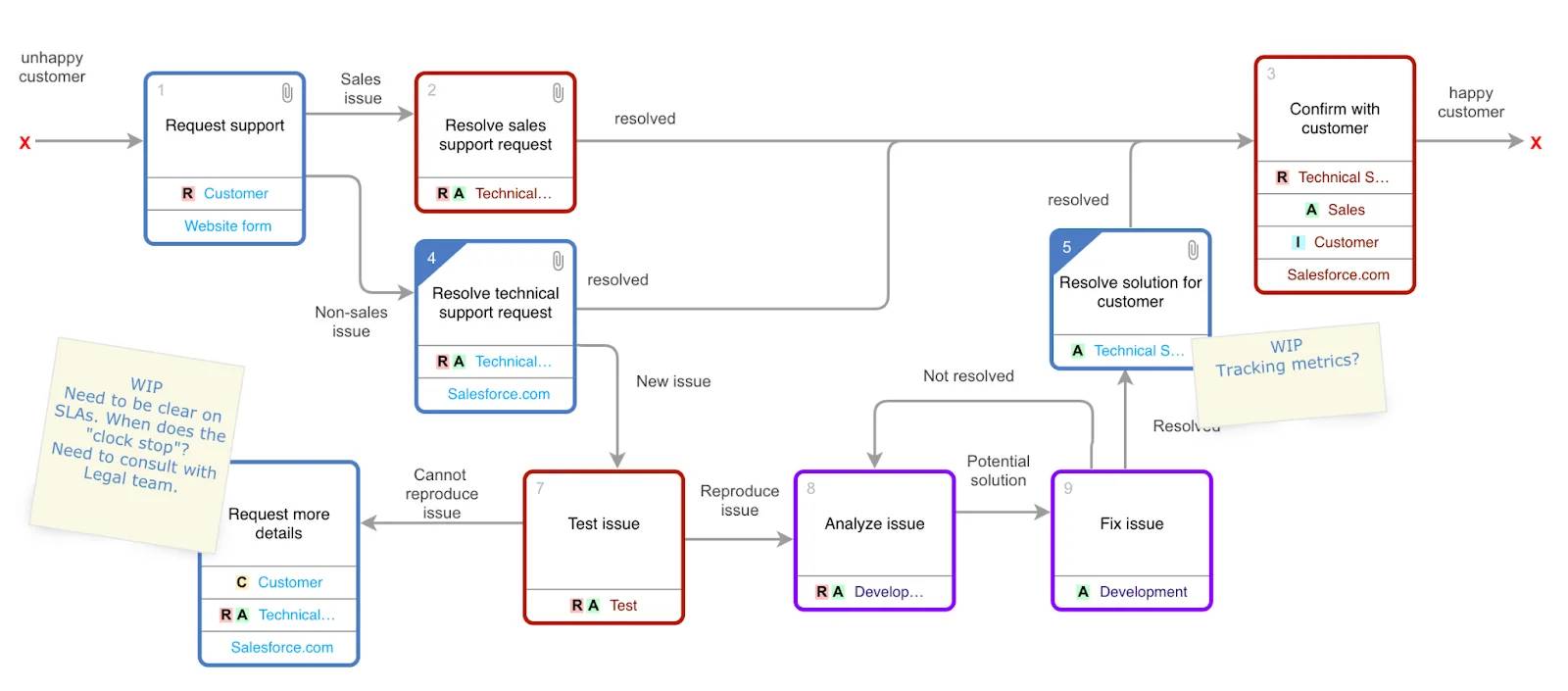
A process mapped using UPN answers, “Who needs to do what, when, why, and how?” at a glance.
Let’s take a closer look at the diagram above.

- Activity box: A verb phrase labels each activity box.
- Resource: A resource in each activity box designates the who . Resources are tagged with RACI (responsible, accountable, consulted, and informed). Some teams choose to indicate who is “supporting” the work using a RASCI model.
- Line with text: Lines with text connect every activity box to another box and represent the handoff between steps.
- Attachment: Attachments provide documents, metadata, or metrics in the context of the process.
- Decision: Several lines coming out of an activity box with line text explaining the flow represent a decision, simplifying the diagram.
- Drill down: Any activity box can drill down to a lower-level diagram.
The diagram is made up of activity boxes. Each box tells you how something is done, when it happens, and why. You can also drill down and add attachments for context.
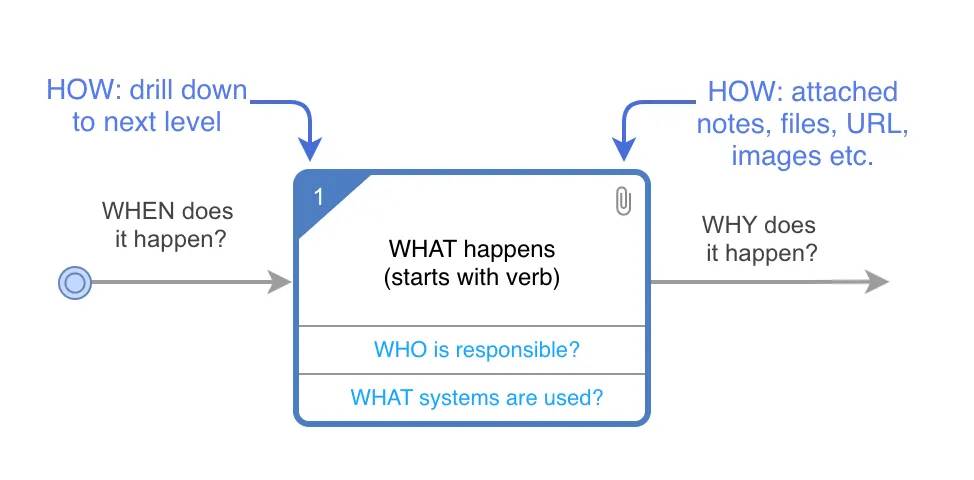
Let’s look at a specific example from the process map above.

The first thing to notice is the who and the what : A technical support agent (1) is resolving a technical support request (2). The agent is tagged with R and A (3), which indicates that they’re responsible for and accountable for this activity. The paperclip (4) indicates that there are additional resources for this activity, in this case the support site and technical support script. The shading on the other corner (5) indicates that you can drill down to another level of detail for this activity. Finally, the arrows leading into and out of the box show what leads to this activity and what happens after it’s done.
Because a process map is a hierarchy of diagrams, you can drill down to see more detail. As a result, you can keep each diagram to 8–10 boxes while still describing a broadly scoped or complex process. There’s no limit to the number of levels you can go down.
Keep these principles in mind as you map a business process using UPN.
- Aim for no more than 8–10 activity boxes on a screen.
- You can drill down from an activity box to the next level of detail.
- You can attach supporting information to an activity box.
- Access rights determine who can view and edit the diagram.
- You can see change history at the diagram level.
It’s not hard to create a great process diagram. You just need to follow the notation and ask yourself three questions as you are mapping. In the next unit, we go over what the right questions are.
- Get personalized recommendations for your career goals
- Practice your skills with hands-on challenges and quizzes
- Track and share your progress with employers
- Connect to mentorship and career opportunities
Four-year Plan
International business major sample plan.
The APAS is the official method for tracking the completion of your specific degree requirements. Please be aware that there are multiple ways for students to progress through this major. This is just one sample. Students should work with their advisor to develop their individual plan.
Italic: course pre-requisites and co-requisites (designated by &)
Bold : Liberal Ed requirement
Freshman Year
Fall Semester
- Econ 1165 Business Economics ( Soc Sci ) (4cr)
- BA 2551 Business Statistics in R ( Math ) (4cr)
- BA 1011 Leading Self & Teams (2cr)
- BA 1021 Design Your Life (1cr)
- Language (5cr)
Spring Semester
- Acct 2051 Financial Reporting (4cr)
- BA 2051 Solving Business Scenarios in Excel (2cr)
- BA 2062 Powerful Problem Solving (2cr)
- Writ 1301 First Year Writing (4cr)
Sophomore Year
Maroon Block I-Core
- Mktg 3001 Principles of Marketing (3cr)
- IDSc 3001 Information Systems & Digital Transformation (3cr)
- BA 3001 Race, Power, & Justice in Business ( RPJ ) (3cr)
- Acct 3001 Strategic Management Accounting (3cr)
- Design Your Career (1cr)
- BA 3051 Data-Driven Business Decisions ( BA 2551 & BA 2051 ) (3cr)
Gold Block I-Core
- Fina 3001 Finance Fundamentals ( Acct 2051 & BA 2551 ) (3cr)
- Mgmt 3004 Strategic Management (3cr)
- SCO 3001 Sustainable Supply Chain Management (3cr)
- HRIR 3021 Human Capital Management (3cr)
- BA 3062 Impact Lab Project ( BA 2062 ) (2cr)
Declare a major: z.umn.edu/CarlsonDeclare
Junior Year
- BA 3551 Business Analytics ( BA 2551 & BA 2051) (3cr)
- Mgmt 3045 The International Environment of Firms (2cr)
- Primary Major course (4cr)
- BA 2005 Corporate Responsibility & Ethics ( Civ ) (3cr)
Semester Abroad
- Coursework may include courses toward the IB major, primary major, liberal education, or electives.
Senior Year
- BA 3033W Business Communication (3cr)
- Primary major course (4cr)
- IB Breadth course (3cr)
- IB Foundations course (2cr)
- Mgmt 4505 Senior Seminar in International Business (2cr)
- Liberal Ed (3cr)
- IB Foundations course (3cr)
- IB Depth course (3cr)
- Liberal Ed (4cr)
Total Credits Needed for Degree: 120
Note: Students must complete an international experience as part of the program requirements. Short-term programs or semester-length programs may be used to meet this requirement. Explore your options: z.umn.edu/CarlsonIE
- Majors & Minors
- Freshman Students
- Transfer Students
- International Students
- Returning Students
- Class Profile
- Scholarships
- Impact Core
- Experiential Learning
- Immersion Core
- International Experience
- First Year Experience
- Organizations
- Student Ambassadors
- Requirements & Deadlines
- Deferred Entry
- International Applicants
- Specializations
- Employment Statistics
- Alumni Profiles
- Clubs & Organizations
- Global Experience
- State Authorization
- Residency Options
- Student Life
- Leadership Development
- International Residency
- Global Team Project
- Lingnan College
- WU Executive Academy
- Valuation Lab
- Tuition & Aid
- Artificial Intelligence in Business
- Partner Schools
- CFA Affiliation
- Requirements
- Student Papers
- Graduate Placement
- Award Winners
- Department Staff
- Dual Degrees
- Custom Solutions
- Talent Development Partnerships
- Carlson General Management Program
- Success Stories
- Learning Measurement & Impact Services
- Short Courses by Date
- Participant Stories
- Executive Certificates
- Centers & Institutes
- Departments
- Behavioral Labs
- 1st Tuesday Previous
- Insight to Action
- Regional Events
- Professional Development Webinars
- Past Events
- National Chapters
- International Chapters
- Affinity Networks
- Corporate Clubs
- With Students
- Career Coaching
- Lifelong Learning
- Subscribe to Magazine
- Submit Class Note
- Engagement Mode
- People & Partners
- Gender Equality Action Group
- Teaching Cases
- Research Grants
- Publications
- COVID-19 Hospitalization Tracking Project
- Partnerships
- Get Involved
- Program Finder
- Connecting Flight
- Identity Course
- Financial Aid
- Parents & Families
- Policies & Forms
- Identity Abroad
- Health & Safety
- Partner School
- Global Executive Programs
- Important Dates
- Student Visa
- Fees & Expenses
- Arrival & Welcome Program
- Global Education Management
- Going Global Newsletter
- Year in Review
- Speaker Series
- Video Series
- Director's Message
- Advisory Council
- Alumni Newsletter
- Herman Library
- Support the Center
- Program Staff
- Advisory Committee
- What We Offer
- Benefactors
- Advisory Board
- Entrepreneurship in Action
- For Students
- For Entrepreneurs
- For Mentors
- About the Institute
- Ignite Conference
- Joseph M. Juran
- 2014-2018 Winners
- 2009-2013 Winners
- 2004-2008 Winners
- 1999-2003 Winners
- Analytics Maturity Model
- Project Workshop
- National Industry Council
- Executive in Residence
- Women & Allies
- MILI Student Association (MILIsa)
- MILI Undergraduates (MILIu)
- Case Competitions
- MILI Specialization
- Platou Leadership Award
- Data Resources
- Laboratory Council
- Lab Fellows
- Student FAQs
- For Clients
- For Employers
- Give to the Valuation Lab
- Academic Programs
- Hotel & Travel
- 2010-present
- Industry Partners
- Friday Research Workshops
- Seminar Series
- New Product Design
- Undergraduate Programs
- Graduate Programs
- Student Dissertations
- Executive Committee
- Board of Advisors
- Capstone Projects
- Employment Reports
- Companies & Employers
- Global Learning
- Full-Time MBA Students
- PTMBA & MSF Students
- Undergraduate Students
- MBA Students
- Marketing Students
- Faculty & Staff
- Methodology
- Project Structure
- Entrepreneurship
- Emerging Leaders of Color
- Business Innovation Academy
- Analytics U
- Carlson THRIVE
- Living in Minneapolis
- Hire Students
- Engage Student Talent
- Access Expertise
- Ways to Give
- Investors Circle
- Diversity, Equity, and Inclusion
- Student Consultants
- Executive Fellows
- Senior Staff
- Current Initiatives
- Cultural Competency
- Annual Report
- Building Maps
- Building Information
- Directions & Parking
- Emergency Preparedness
- Facility Policies
- Reserve a Space
- Frequently Asked Questions
Competitive Events
Find Your Event
Competition Success
Online Practice Exams
Vocabulary Flipcards
Performance Indicator Flipcards
Video Library
Chapter Name
International Business Plan
The International Business Plan Event involves the development of a proposal to start a new business venture in an international setting. Any type of business may be used.
Career Opportunities
Align Energy
Align Energy is a revolutionary utility-management service that seeks to provide users with the ability to smartly budget their energy expenses. Through the use of an app and website, Align’s interface displays a household’s real time energy usage, showing electricity, water, and gas usage in a logical format that clearly states how much they have spent at any time.
Sample Exams
Exam blueprint.
The chart below shows the number of items per instructional area for the 2023-2024 exams used at the district level, chartered association level and the International Career Development Conference.
EXAM STRATEGIES
The exam blueprint is your best friend.
Use the exam blueprint to focus your preparation efforts. You may prioritize studying instructional areas with the higher number of questions listed the blueprint.
Keep Expanding Your Knowledge
As you advance in competition, exam items become more specialized to the Career Cluster. Therefore, you should start with an understanding of general business concepts in the Business Administration Core and build on the knowledge within the Career Cluster of your competitive event.
Review Your Work
Don’t just take the exam! After you take the exam, compare your answers to the exam’s key. If you incorrectly answer a question, re-read the question, note the correct answer, and then read the descriptive key. The descriptive key explains the correct answer and why the other answers are incorrect. This will also help you understand the performance indicator addressed in the exam question.
Focus Your Efforts Where They Need To Be
Each exam question is linked to an instructional area. For each incorrect answer, tally the instructional area it matches. If you are noticing a pattern of incorrectly answering questions within particular instructional areas, spend more time learning the knowledge and skills within those instructional areas. Spend more time reviewing the performance indicators under those instructional areas.
Form Study Groups
Because there are only seven DECA exams, chances are high that some of your fellow chapters are taking the same exam as you, even if they are in a different competitive event. Use this opportunity to form study groups. You could consider taking the exam together and discussing the questions and answers. You could even divide and conquer to prepare study materials to help understand performance indicators.
Get In The Mode
Recreate the testing scene. Find out from your chapter advisor the setting for your exam during competition. Will you be taking the exam online through an electronic device prior to the competition, or using pencil and paper on-site during the competition? Find out how long you will have to take the test. Then try to replicate the setting using a practice test and using the same time frame you are given in competition.
Develop a Study Schedule
Make sure to study and prepare on a regular basis. Plan a study schedule and calendar leading up to your competition. Do not study right before you take the test. Instead, concentrate on being calm and confident in yourself when taking the exam.
Test Taking Techniques
When taking the exam, use these general test taking techniques:
- Familiarize yourself with the format.
- Read the question. Think about the answer.
- Read all choices before choosing your answer.
- Eliminate choices you know aren't correct.
- If you get stuck, circle and come back.
- Always take an educated guess.
- If time allows, review your work.
Remain Positive!
Be confident. Refrain from engaging in negative discussions with other members prior to the exam, such as “I’m so nervous – I don’t know if I studied enough.”
Sample Role-Plays
Instructional areas.
Each role-play focuses on a primary instructional area. For each role-play, a majority of its performance indicators will focus on that primary instructional area. The following instructional areas may be used in this event's role-plays.
ROLE-PLAY STRATEGIES
Key elements.
The following key elements are always a part of each role-play scenario. Understanding the format and style of the role-play will help you become familiar, feel comfortable and easily identify the key elements so you can maximize your time developing your solution.
- Participant Role
- Company and Brief Description
- Deliverable
- Instructional Area
Performance Indicators
- Meeting Location
The performance indicators are your guide to a focused presentation! Apply them to the situation because they are always based on a real-life situation. Use industry knowledge that you have researched before competition to supplement what you know about your performance indicators. This helps demonstrate your proficiency.
What's the Ask?
At the end of any role-play situation, you are presented with what the judge is looking for from you. Make sure you address what the judge is asking while incorporating the performance indicators. You will want to wow your judge with your solution while explaining it by incorporating the performance indicators.
Communication is Key
Speak clearly so that the judge can understand what you are sharing with him/her. You have time to talk about your performance indicators within the situation—don’t rush and take the chance a judge didn’t hear you talking about something. Be natural and comfortable in your role in the situation. Nonverbal communication can be just as important as verbal communication. Smile and be confident to help demonstrate your professionalism.
Be Creative and Stand Out
Be calm, be professional and be enthusiastic. Don’t be scared of your competition. There are many creative ways to approach a role-play, and no one way is necessarily right, so focus on adding your own creative twist to what you do. Don’t just have a “Plan A”; exceed expectations by having options for your judge to select from if the situation calls for it. Setting yourself apart through innovation, creativity and quality ideas is the key way to stay in a judge’s mind long after all the competitors have finished presenting. What can you bring to the presentation that no other competitor will show your judge?
Connect with the Judge
Take time to make sure your judge is following your thoughts. You can ask your judge questions to make sure he or she has understood what you have shared. Near the end of the role-play, the judge will likely ask you questions. When you are preparing your presentation for the role-play, you may anticipate what questions the judge may ask. However, if you need a minute to consider the questions before answering, say so in a professional manner. This reflects your respect of his or her position and your desire to share an informed answer.
Speak the Language
When speaking with the judge, be as professional as possible, while still being personable and accessible. This means using accurate industry terminology when the situation calls for it. Do not be afraid to use sophisticated or rich vocabulary—without sounding like you’re just trying too hard to impress, because, of course, you still want to be relatable, friendly, and down-to-earth.
Make a Good Impression
Be friendly, make eye contact and give a firm handshake when you first meet your judge. Do not wait for them to introduce themselves; rather, take the initiative. While you might be nervous and feel awkward, taking initiative shows that you truly are mature, confident and comfortable. Also, adhere to the dress code, because you come across as much more professional if you really do look like a business executive. You may also consider the career area in which you are competing. For example, as a competitor in Apparel and Accessories Marketing, you may want to wear something that will reflect an interest in fashion or a more creative point-of-view, without being outrageous. You want to leave a good impression with the judge, and of course, be rememberable.
WRITE IT LIKE YOU MEAN IT
Participants in the International Business Plan will prepare a written proposal to start a new business venture in an international setting. It may be a new business or a new product or service of an existing business. Any type of business may be used. The body of the written entry must be limited to 20 numbered pages, including the appendix (if an appendix is attached), but excluding the title page and the table of contents.
WRITTEN ENTRY GUIDELINES
The written entry must follow the specifications provided in the Written Entry Guidelines section of the DECA Guide for the competitive event. In addition to the Written Entry Guidelines, participants must observe all of the standards on the Penalty Point Checklist. These standards are designed to make competition as fair as possible. Additionally, the Written Event Statement of Assurances and Academic Integrity Form must be signed and submitted with the entry.
Sample Written ENTRY
Written entry strategies, content is king.
The written entry is the foundation of your competitive event. It's your outline for your project or plan, and represents your process to achieving your outcome. Choosing the right written event and the right company, event, idea, product or topic is so important, because you want to be passionate about the work you will endeavor in this process. Be thoughtful when making your decisions using some of these key considerations:
- Is there enough data accessible?
- Can I get information I need from the company or about the product, event or idea?
- Are there real people I can engage with or enlist the help and expertise of?
- Is this cutting edge or has the potential to be?
First, But Last
The executive summary is one of the most important parts of your written entry. Not only is it likely to be one of the first parts of your entry the judge reviews, it also provides an overall summary of your entry. It should be dynamic, concise and effectively highlight the main points of your written entry all while including a call to action. Often, it is best to write the executive summary last so that you can identify the most relevant components to include. Some tips for an effective executive summary include:
- Start with a bang.
- Identify the problem solution and opportunity.
- Focus on what makes you stand out.
- Sell don't just tell.
- Include data and finances.
- Use graphics and formatting as appropriate.
- Imagine this is the only thing someone would read.
Review, Edit, Proofread
Once you have completed your written entry, review it against the written entry guidelines and written entry evaluation form to ensure you have addressed each item. If you believe items are missing or need improvement, revisit your written entry and improve those areas. You may also wish to ask consultants to read your written entry against the criteria and provide feedback. Often, that is the best way to determine if your written entry is clearly understood by someone other than you as the project creator(s). In addition, you should edit and revise your written work so that it is well-organized, professional, logical and error free.
Avoid Penalty Points
Penalty points can cause you to lose your chance for advancement quickly! Many times, they can easily be avoided. Some of the most common reasons for penalty points include:
- Not using the current year’s event guidelines.
- All participants or advisor not signing the Statement of Assurances.
- Leaving out sections in the body of the written entry.
- Having too many pages. Double check the number of pages allowed in your written entry.
Give your entry to a trusted advisor or peer to review against the Penalty Point Checklist.
PRESENT WITH PIZZAZZ
The participants will present the project to the judge in a 15-minute presentation. The judge is role-playing a business executive. The presentation begins immediately after the introduction of the participants to the judge by the adult assistant. Each participant must take part in the presentation.
PRESENTATION GUIDELINES
Each participant may bring a copy of the written entry or note cards pertaining to the written entry to use as reference during the presentation. Only visual aids that can be easily hand carried to the presentation by the actual participant(s)will be permitted. The participants themselves must set up the visuals. Wheeled carts, moving straps or similar items may not be used to bring visuals into the area. Set up time is included in the total presentation time. Participants must furnish their own materials and equipment. No electrical power or internet connection will be supplied. Alternate power sources such as small generators are not allowed. Sound may be used, as long as the volume is kept at a conversational level. Materials appropriate to the situation may be handed to or left with judges in all competitive events. Items of monetary value may be handed to but may not be left with judges. Items such as flyers, brochures, pamphlets and business cards may be handed to or left with the judge. No food or drinks allowed. If any of these rules are violated, the adult assistant must be notified by the judge.
Presentation Strategies
First things first.
Consider your presentation your time to highlight the most important parts of your competitive event. In every case, you're trying to sell the judge that your idea, concept or plan is the best. Start with that in mind, and develop an outline for your presentation. Your ultimate goal is for the judge to choose your presentation. Consult the presentation evaluation rubric in the DECA Guide to ensure that your presentation includes information for all of the scoring criteria. You may also consider visual aids and if you'll use technology — but make sure they are relevant and meaningful to your presentation.
Brand Yourself A Winner
When creating your project and delivering your presentation, you are essentially developing a brand for yourself and your ideas. Make your presentation’s brand attractive and easy for your judge to remember by wrapping it in a strong visual package. Tie together all the elements of your project, from the charts and graphs of your written document, to your slide backgrounds, to the shirt you wear with a signature element, such as a particular color palette or pattern.
Stop, Look, Listen
A great portion of your presentation’s success isn’t dependent on what you say, but how you say it. Like any good speech, the judge may not recall every statistic, market segment or promotional idea that you deliver, but they will remember how you made them feel. That’s where confidence in your delivery comes in. Being excited, nervous and anxious about your presentation can cause your rate of speech to increase rapidly, making your words fly by in a blur. Always remember the power of pause. When practicing your presentation, incorporate pauses into your phrases. This will create a dramatic, ear-catching effect to keep your judge attentive to your presentation, plus it will emphasize important points and information.
Eye contact is another way to connect with your judge. Locking eyes shows confidence in the points you’re delivering and is another way to keep your judge engaged in your delivery.
A memorable part of your delivery that will greatly affect how your judge feels is your tone of voice. Your tone should vary depending on the subjects you’re covering in your presentation. For example, presenting a charity that your Community Giving Project supports may be most effective with a serious, earnest tone, yet in sharing your creative marketing ideas for an Integrated Marketing Campaign event, an excitable, vibrant tone would be great for expressing your creativity. No matter what tone you use, make sure you vary your expression. Nothing will lose a judge’s attention more than a flat, boring delivery that gives them no feeling about your topic.
While relying on your innate ability to “wing it” is never recommended for competition, writing down paragraphs of perfect phrases, word-for-word, doesn’t guarantee that your presentation will turn out trophies either. Note cards are a handy tool to remember specific numerical data and exact quotes, but using them as a crutch for your memory could reduce your confident delivery, especially in form of eye contact with your judges. Instead, commit your presentation to memory as best as possible. If you thought it, developed it and wrote about it, you should be able, with a bit of practice, to present it well. Use your visual aid to help guide your talking points, with illustrations, diagrams or other images to help cue your words.
Just because you reach your last slide doesn’t mean it’s time to thank your judge, shake hands and flee the room. The time after your formal presentation is crucial for further interaction with your judge. Take this opportunity to clarify parts of your presentation, show more of your personality and impress your judge with an ability to provide thorough answers to any questions they may have. The best way to flawlessly answer these questions is to prepare for them in advance. Use your advisors and peers as practice judges for your presentation, and request that they each ask you at least three follow-up questions to your presentation. You begin to become more confident delivering answers off-the-cuff and will begin to learn the most commonly asked questions of your presentation. Should your judge not immediately ask any questions, ask for them!
To leave even more of an impact on your judge, provide them with a handout before you walk out the door, such as a brochure or outline. Use this strategy to highlight important takeaway points from your presentation, further brand yourself and your ideas, and keep a presence in front of your judge, even long after your final handshake. Make sure to have a final statement or call to action to show your judge that you’re interested in following through.
INSIGHTS INTO THE INDUSTRY
Industry trends are patterns or current happenings that occur within a specific industry. Keeping up with the industry helps give you a pulse on issues and trends that are affecting the industry. This knowledge can help you develop creative, relevant and timely solutions for your competitive event.
5 Things You Really Need to do when Starting Your Own Business
How to spot the next 500-unit franchise, build a bank relationship before you need a loan, quizno owner could purchase bankrupt group, how founders can manage investor relations during a recession, the major benefits of social media for small business owners, how small businesses are competing for hires, mom and pop stores making a comeback, conquer the competition.
Not only do these interactive competition preparation tools help you expand your industry terminology, understand performance indicators and check your comprehension through exam items, they also help you prepare for DECA competition!
.png)
Expand your vocabulary

Broaden your knowledge

Check your comprehension

DECA Direct Online is your source for competition tips and career insights. Check out these articles and more on DECA Direct Online as you prepare for competition.
3 Written Event Competition Tips To Consider
The ultimate written event guide, 4 things you must remember while public speaking, deca goes lean in entrepreneurship.
DECA+ ACCEPTABLE USE POLICY A DECA+ subscription is required for each DECA chapter wishing to access the resources within the DECA+ site. The login is to be used only by the chapter and its members, and the login cannot be shared beyond the chapter. Under no circumstances may any of the content, including but not limited to exams, scenarios or sample written entries, in whole or in part, or any item within be published or posted on any website. Under no circumstances may any of the content, including but not limited to exams, scenarios or sample written entries, in whole or in part, or any item within be shared or distributed beyond the specific DECA chapter that has purchased the subscription. Any chapter(s) which violates the DECA+ distribution and use policy will not be allowed to participate in the current school year’s chartered association conference or the International Career Development Conference. If any exams or scenarios are posted on a chapter or chartered association website in way outside of the distribution and use policy, the chartered association will not be eligible to purchase exams or receive scenarios from DECA Inc. for a period of one year for the first offense. Furthermore, further access to DECA+ by the chapter(s) in violation will be prohibited effective immediately for a period of no less than three years.
Saudi Arabia's futuristic $500 billion Neom megacity just got a lot smaller... for now, report says
- Saudi Arabia has cut estimates for people living in its $500 billion Neom project.
- Its government hoped the futuristic "The Line" city would hold 1.5 million by 2030.
- Now, fewer than 300,000 are expected to live there by then, officials said, per Bloomberg.

Saudi Arabia has cut estimates for the number of people living in its Neom megacity project by 2030.
Its government had previously said it wanted 1.5 million residents to be moved into the project's futuristic city, "The Line," by then, Bloomberg reported.
But that number is now likely to be fewer than 300,000, the Bloomberg report said, citing an unnamed person familiar with the matter.
Billed as a "cognitive city," The Line is set to stretch over 170 kilometers (roughly 105 miles) of desert to the Red Sea in the northwest of Saudi Arabia.
But just 2.4 kilometers (around 1.5 miles) of that is expected to be completed by 2030, the person familiar with the matter told Bloomberg.
The $500 billion Neom megacity, which will cover 26,500 square kilometers (just over 10,200 square miles), is part of Saudi Crown Prince Mohammed bin Salman's Vision 2030 plan to diversify the kingdom's economy away from oil and pivot toward tech and innovation.
It is set to feature glow-in-the-dark beaches, ski slopes, an artificial moon, robot butlers, and flying taxis, according to glossy brochures and public statements by its planners .
Related stories
But human rights activists have raised fears that the grandiose plans reflect not just Crown Prince Mohammed's ambition but his refusal to tolerate challenges to his power.
Experts told Business Insider in 2023 that the city could be fitted with Chinese technology to gather data on residents as part of a sweeping surveillance program. Others raised concern about the harsh punishments meted out to Saudi critics of the project, with Business Insider reporting last year that a woman was jailed for 30 years for criticizing the plans on social media.
Neom is just one of several "gigaprojects" underway as part of this plan.
The country's Public Investment Fund (PIF), its sovereign wealth fund, has long shouldered the large financial burden imposed by such projects — which are estimated to run at tens of billions of dollars each.
But the PIF said in January that its cash as of September had dropped to the lowest level since December 2020, The Wall Street Journal reported.
And that has forced the government to turn to a tactic it hasn't used for a long time to boost its funds — borrowing, per the report. It has also been reported that the kingdom plans to sell more shares in the state oil company Saudi Aramco this year.
The Saudi ruler has used a range of tactics to rebuild his global influence and reshape Saudi Arabia since the 2018 murder of dissident Jamal Khashoggi, which almost resulted in him being made a pariah on the world stage.
Alongside economic megaprojects, Saudi Arabia has also thrown money into other areas, such as sports.
The Guardian estimated in July 2023 that the kingdom had spent at least $6.3 billion on sports deals since 2021, from funding a giant merger between the PGA Tour and LIV Golf to prying a host of global soccer stars away from European leagues on huge salaries.
"It's mind-boggling the amount of stuff that's trying to be done here," Tim Callen, a visiting fellow at the Arab Gulf States Institute think tank, told The Journal.
Watch: The true cost of the lithium mining boom powering electric cars
- Main content

COMMENTS
An international business plan acts as a framework that identifies goals and objectives, specific target markets and clients, resources required and strategies to be developed in pursuit of international business opportunities. The plan allows for the monitoring of progress via metrics against which success and failure can be measured. A comprehensive international business plan will be ...
The first stage in developing an international business plan is to undertake a preliminary country analysis. Presented below are four separate sections to be completed for collection and analysis of market data and preparation of the plan: (1) Analysis: Cultural Environment; (2) Analysis: Economic; (3) Analysis: Market and Competitors; and (4 ...
Download product. Price. 30,00 €. 30% Discount for the purchase of 2 or more products. The INTERNATIONAL BUSINESS PLAN is a practical guide and template for international market development used by companies, executives, consultants and students that require a practical tool for planning international activities.
The template provides a comprehensive framework for businesses to establish effective international business relationships, utilize digital platforms, and recruit qualified international talent. It is a powerful tool that can help businesses develop and grow their international presence. 1. Define clear examples of your focus areas.
First, determine your company's export readiness by taking this nine question quiz created by the U.S. Department of Commerce. The website calculates your readiness score and provides additional resource links to help overcome any corporate weaknesses. Next, develop a plan.
This involves conducting market research to identify which countries or regions hold the greatest potential for your business. You can start by looking at demographic data, economic trends, and consumer behavior in different parts of the world. Of course, you should also delve into the market-specific data. Analyzing the competitive landscape ...
An international business plan describes who a business is, what it plans to achieve and how it plans to overcome risks and provide anticipated returns.Learn...
- Your international business plan will be wrong, but it doesn't mean it won't be useful. So let me explain. There are so many factors you won't be able to control when expanding overseas, it will ...
A comprehensive international business plan not only demonstrates the business's potential for success but also provides a roadmap for sustainable growth and profitability. To create an effective international business plan, certain key components must be incorporated to ensure its success. Among these components are a thorough market ...
When expanding your business internationally, it's crucial to have a well-structured plan in place. ClickUp's Business Plan Template for International Business includes: Custom Statuses: Track the progress of each section of your business plan with statuses such as Complete, In Progress, Needs Revision, and To Do.
To make a success of international trade, it is important to approach it as a separate part of the business and draw up a specific international business plan.Without this planned approach, things could turn sour quickly, if credit control becomes a problem for example, or timelines required to place people in overseas territories are misjudged.
Following are five tips on how to scale a startup business or established business globally. 1. Create a Service or Product that Meets a Need in Global Markets. Many of the world's largest international companies are based in the U.S. Digital connectivity as a means to expand into new global territories has become more common.
5 Must-Haves Every International Business Expansion Plan Should Have. In a globalised world, growing your home-based business by tapping into new markets is easier than ever—at least in theory. Developing an international business expansion plan can be a transformative experience for any organisation. After establishing a successful company ...
An international business plan is crucial for capitalizing on global markets' opportunities and challenges. It ensures a well-organized and strategic approach to foreign expansion, reducing risks ...
The typical content of International Business Plan is: At this stage, we identify the best strategy that will help our client to enter each particular foreign market of interest. The examples of international business strategies are exporting, licensing (franchising), joint venture, foreign direct investments, etc.
upn t3prof: heidi cynthia mendoza cairocÓdigo de curso: empr1405. about ...
The Plan will serve as step-by-step guide to lead the company through the process of exporting products and services to international markets. Definition of International business plan: Planning is essential for any business. Before venturing into international markets companies have to draft an International Business Plan as this.
Please sign me up for program updates and other learning opportunities. Name. Email. I am a: I want to receive updates from the Wharton Global Youth Program and the Wharton School. The holder of parental responsibility gives consent to the processing of my personal data. Children under the age of 16 must have this form completed by a parent.
About Press Copyright Contact us Creators Advertise Developers Terms Privacy Press Copyright Contact us Creators Advertise Developers Terms Privacy
These methods range from very simple to very complex. BPMN, for example, has a 538-page user manual. In this module, we're going to use Universal Process Notation (UPN). UPN is a simple, engaging diagramming notation that's applicable across industries, at companies of all different sizes, and for processes at every level of complexity.
Total Credits Needed for Degree: 120. Note: Students must complete an international experience as part of the program requirements. Short-term programs or semester-length programs may be used to meet this requirement. Explore your options: z.umn.edu/CarlsonIE. Four-year PlanInternational Business Major Sample PlanThe APAS is the official method ...
WRITE IT LIKEYOU MEAN IT. Participants in the International Business Plan will prepare a written proposal to start a new business venture in an international setting. It may be a new business or a new product or service of an existing business. Any type of business may be used. The body of the written entry must be limited to 20 numbered pages ...
President Joe Biden announced on Monday a new, sweeping student loan forgiveness plan, which could benefit tens of millions of Americans. Biden shared the details of the aid package at an event in ...
Two leading US lawmakers have reached a bipartisan deal that could, for the first time, grant all Americans a basic right to digital privacy and create a national law regulating how companies can ...
Share your videos with friends, family, and the world
But Musk, on a Friday afternoon, when companies tend to bury news, announced on X that Tesla would unveil its robotaxi on August 8. His post was simple and included no details. "Tesla Robotaxi ...
Israel may have just hit a turning point in its war on Gaza — but not for the reason you think. Analysis by Joshua Zitser. Apr 5, 2024, 8:48 AM PDT. Israeli Prime Minister Benjamin Netanyahu ...
Apr 6, 2024, 5:52 AM PDT. A conceptual image of "The Line" in Neom. Neom. Saudi Arabia has cut estimates for people living in its $500 billion Neom project. Its government hoped the futuristic ...